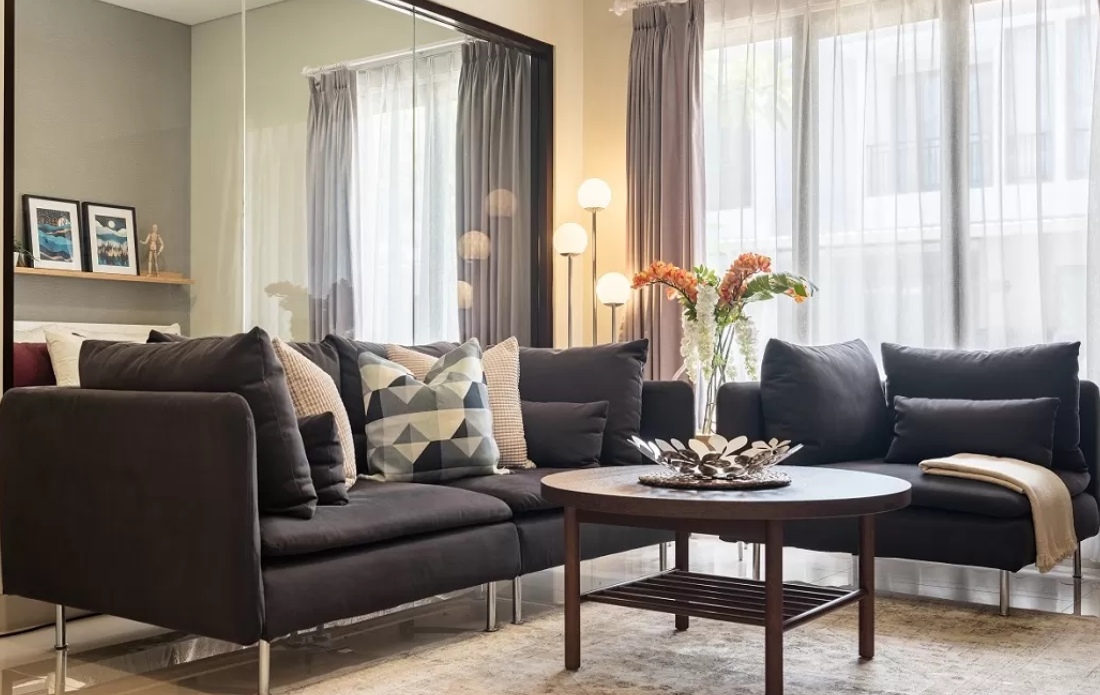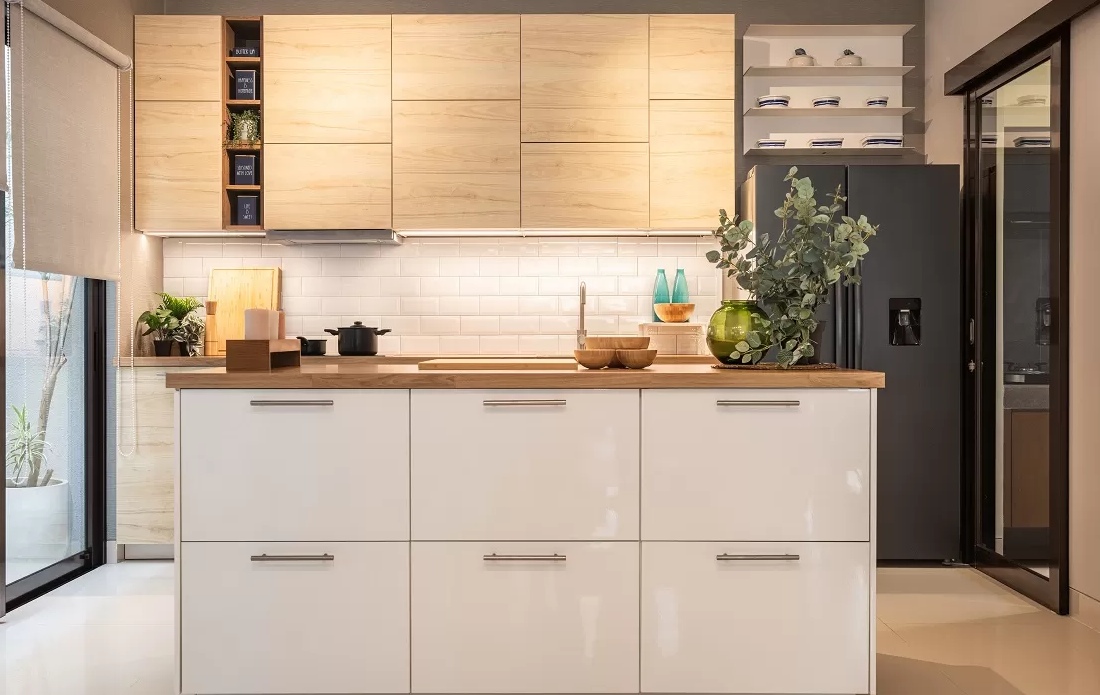To create an effective and appealing home interior, it’s crucial to understand these seven core design principles:
1. Balance: creating visual harmony
Symmetrical, asymmetrical, and radial balance techniques are used to visually distribute elements within a room.
This principle ensures harmony between different elements, resulting in a stable and visually pleasing space.
2. Unity and harmony: ensuring all elements work together
Interior design requires unity between colors, patterns, and textures within a space. All elements should complement each other so the room doesn’t feel chaotic.
With this principle, you can create a harmonious space where every detail contributes to a unified atmosphere.
3. Rhythm: adding visual movement
Rhythm in design refers to the repetition of patterns, colors, or shapes to guide the eye naturally through a space.
Using repeating textures or geometric elements adds depth and makes the room feel more dynamic and alive.
4. Emphasis: establishing a focal point
A focal point is essential in every room—whether it's a large painting, a fireplace, or a unique piece of furniture.
A well-placed focal point adds character and enhances the overall spatial arrangement.
5. Scale and proportion: matching furniture size to the room
Scale and proportion affect both the visual and physical comfort of a space. Furniture that’s too large can dominate, while pieces that are too small may feel out of place.
Balanced proportions between basic elements and room size create a spacious, pleasing atmosphere.
6. Contrast: bringing design to life with interesting differences
Contrast is key to avoiding a monotonous space. Pairing light and dark colors, rough and smooth textures, or contrasting shapes introduces visual richness and energy.
7. Functionality: ensuring the space is practical
Functionality is a fundamental aspect of interior design. A well-designed space supports easy movement and efficient use.
Thoughtful layout, proper lighting, and smart furniture selection ensure the room is both beautiful and practical for everyday life.
Practical applications of interior design principles
Now that you understand the basic principles of interior design, you can start applying them to shape a space that matches your style and needs. Here are a few practical examples:
Modular Furniture for balance and flexibility
Modular furniture lets you adapt the room layout based on your needs.
This helps create a functional and flexible space, while maintaining balanced proportions.
Neutral colors with contrasting accents
Combining whites, greys, and natural wood tones with bold accent colors can give your space a spacious, modern feel.
Color greatly influences the atmosphere and helps establish strong visual focal points. Choosing a color palette that fits your interior context also supports the principle of harmony.
Proportionate furniture for small spaces
In limited spaces, choosing furniture designed for smaller rooms is crucial. It supports efficient use of space while maintaining visual balance. Elements like rugs, lighting, and other small details further enrich the room's design.
Also read: Free interior design web app to design your dream home
Great interior design starts with the basics


